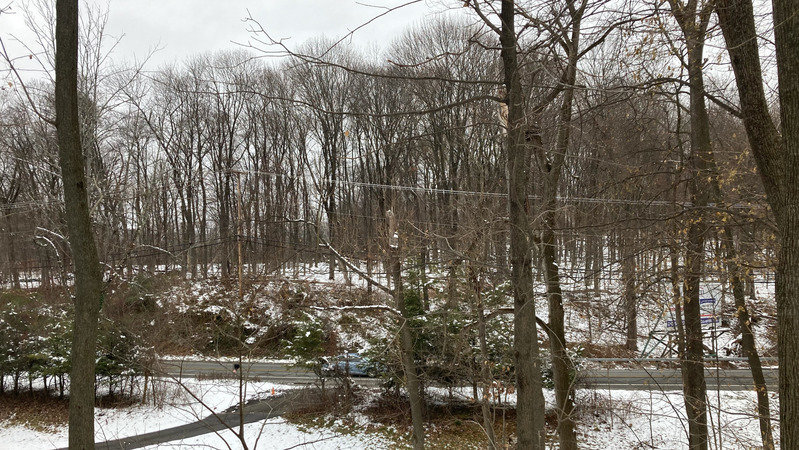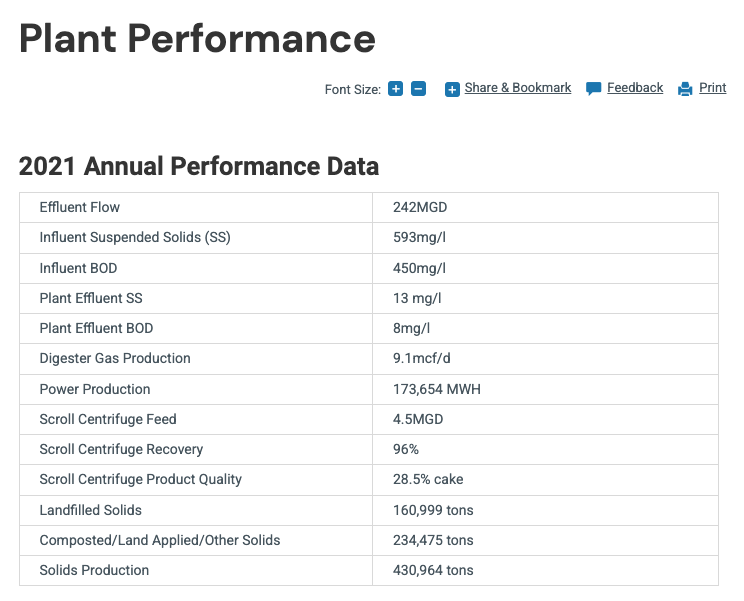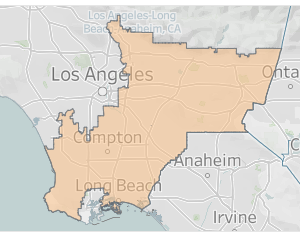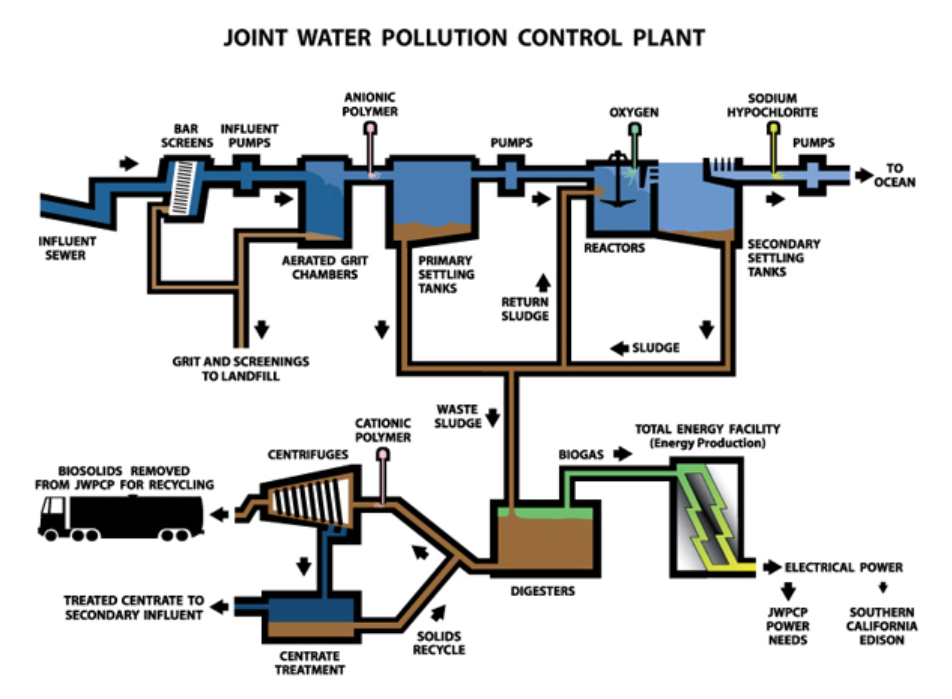Meta:
Executive Summary
- Sewage Capacity is not a reason to deny infill housing in established areas of Los Angeles County.
- It's cheaper to service sewage from infill housing than for sprawl housing because you are using capacity that already exists and is currently underutilized.
- Infill housing reduces or eliminates the cost of declining water flows, reducing costs to existing residents.
- Infill housing spreads the fixed costs of infrastructure among more customers, reducing costs to existing residents.
After I signed that petition, Change.org offered me another one to consider.
Their algorithms offered me Oppose the mass build apartment complex on Little Britain Rd (Rt 207).
It was such a classic display of NIMBY Kettle Logic about horrible traffic and parking woes, which they themselves contribute towards. This area is simultaneously such a historic area that it should not be desecrated with more traffic, while it is already so traffic-choked, that it cannot accommodate one more car.
But, since I had just been thinking about the societal impacts of chemistry and engineering, I homed in on the arguments about sewage.
- A massive build like the one being proposed will dramatically change the character of our neighborhood.
- It will also have a significant impact on traffic in the surrounding area.
- It will further tax our already heavily burdened water and sewage systems, and potentially have damaging environmental impacts to the Quassaick Creek and its wildlife.
The build puts additional strain on the current water supply and added pressure to the city sewage system’s downstream capacity.
Residents in the town of Newburgh are currently nearing our maximum agreed sewage usage with the city.
...
In 2004 the town updated their intermunicipal sewer agreement with the city to increase the amount of sewage the town sends to the city treatment plant at 2,000,000 gals/day with the ability to send an additional 2,000,000gals/day providing the town pay to enlarge the current city facility. This previously cost taxpayers $1,250,000 to construct the necessary facilities. According to the November 3 town planning board minutes, the town is currently sending 2,000,000 gals/day already and at their first allotment. They have 2,000,000 more gallons owed to them, but much of that has already been allocated to other projects.
As stated in their draft scope, the proposed apartment complex would produce an estimated 28,380 gals of liquid waste per day. And according to the 2004 intermunicipal contract "when the town’s average flow exceeds 3.4 million gallons per day as evidenced by the last 90-day average flow" a second expansion will need to be constructed by and paid for by the town residents, unless we insist the cost be passed on to the builders of these new projects.
The US Census office estimates that Newburgh, NY has a 2021 population of 28,834.
If 28,834 people send 2,000,000 gals/day of sewage to the treatment plant, that's 69.4 gallons per capita per day (gpcd). How many times are they flushing every day?!?! Or do they have many industrial facilities? Why are they using so much water?!?!
In contrast, 4.8 million Los Angeles County residents and a lot of businesses & industrial facilities sent 242 MGD of sewage (in 2021) to the Joint Water Pollution Control Plant (JWPCP), 50.4 gpcd.
If Newburgh residents were as water-thrifty as Angelenos, they could house 10,000 more people and have cheaper sewage service as well because they would be spreading fixed costs among more customers.
JWPCP has a design capacity of 400 MDG, we've added ~1 million people to the service area in the last 20 years, and we are still using only 60% of the capacity. We can add millions more residents without needing any more sewage treatment capacity.
JWPCP is a huge plant that serves almost half the people in the most populous county and one of the largest manufacturing centers in the US.
They do seem interested in providing homes for cars. One of their objections to this apartment complex is that it will only provide 515 parking spots for 259 homes.
Enough poking fun at Newburgh NIMBYs. We have plenty of NIMBYs at home in Los Angeles County to poke fun of.
Gratuitous diagram of JWPCP, a social network tying together 4.8 M Angelenos
Consider the problem of declining water flows. This is a serious and expensive problem for established areas that are not building housing fast enough to offset improvements in water efficiency. Californians in existing developed areas are using about 2% less water per year. If that is not offset by infill, this causes problems for both drinking water and sewage systems.
California Urban Water Agencies surveyed their members and wrote a white paper on Adapting to Change: UtilitySystems and Declining Flows. Go to Section 6 (page 22), Impacts of Declining Flows on Wastewater Treatment Plant Operations. 40% of urban systems reported effluent quality problems.
Lower flow means longer residence times in the sewage pipes, which exacerbate production of gases. That's both an odor and a corrosion problem. It also decreases the amount of hydraulic pressure, which works with gravity to move sewage towards the treatment plant.
In fact, the less hydraulic pressure you have, the more energy you need to apply (e.g. sewage lifting stations) to push the effluent along. We have so much excess capacity in our existing sewage mains, it's costing us more energy to pump it to the treatment facilities.
You also need to spend more unclogging pipes. We sometimes have to put fresh water into the sewage mains to reduce the residence times, clear clogs, and provide hydraulic pressure.
We'll save the problem of declining flows on drinking water systems for another day. Spoiler, it's cheaper and safer for everyone if we concentrate new residents in existing areas rather than build new sprawl.
Bonus Sewer Content:
the year is 1873.
— NE Ohio Regional Sewer District (@neorsd) December 23, 2022
in cleveland, a tall and narrow sewer is being dug deep underground and built by hand, brick by brick to move sewage. the work is hard. the need is great. the city is growing.
the year is now 2022. and this is that sewer.
149 years old.
still in use today. pic.twitter.com/DoiGS0TfsT





No comments:
Post a Comment
Comments are open for recent posts, but require moderation for posts older than 14 days.